1. What makes a twist-lock extension cord different from a standard extension cord?
Twist-lock cords use rotating, locking connectors that secure the plug into the receptacle, preventing accidental disconnects from vibration, tension, or movement. This is essential for industrial environments and temporary power systems.
2. Where are twist-lock cords typically used?
They’re most commonly used on industrial job sites, refineries, power plants, construction projects, shutdowns, shipyards, and with generators or temporary power distribution units.
3. What cable type is used for the L-Series cords?
WorkSite Lighting uses SOOW or SEOOW industrial cable—oil-, water-, UV-, and chemical-resistant, and rated for harsh indoor/outdoor conditions.
4. What do the different “L-Series” codes mean (L5, L6, L14, L21, etc.)?
The “L” followed by a number identifies the NEMA twist-lock pattern. The number and pin configuration tell you the voltage, phase, and amp rating the cord is designed for.
5. How do I know if I need L5, L6, L14, or L21 connectors?
It depends on your voltage and phase needs:
• L5 = 120V, single phase
• L6 = 250V, single phase
• L14 = 120/240V, single phase, 4-wire
• L21 = 120/208V, 3-phase, 5-wire
If unsure, we can help match the right connector to your power source and equipment.
6. Are these cords compatible with generators and temporary power panels?
Yes — L-Series cords are designed for generators, power distribution boxes, and industrial temporary power systems that use twist-lock outlets.
7. Can I use these cords outdoors?
Yes. SOOW and SEOOW jackets are weather-resistant and suitable for outdoor use, including wet or oily environments.
8. Can the cords be used in hazardous (classified) locations?
The cords themselves are not explosion-proof. They can be used in non-hazardous or non-Classified safe areas feeding equipment, or when the equipment being powered is rated for the classified space. Contact us if cords are needed for classified environments—we can recommend compliant solutions.
9. What wire gauges are available?
Common sizes include 12/3, 10/3, 8/3, and 6/4 depending on amp load and distance. Heavier gauges reduce voltage drop over long runs.
10. What is the maximum length available?
Standard lengths include 10ft, 25ft, 50ft, 75ft, and 100ft. Custom lengths are also available upon request.
11. Do these cords prevent accidental unplugging?
Yes. Twist-lock connectors must be rotated to lock in place. Once locked, the plug will not disconnect unless manually released.
12. Are GFCI twist-lock cords available?
Yes. We offer GFCI-protected models or add-on modules for personnel protection and job-site electrical safety.
13. Can I run multiple cords in series (“daisy-chain”)?
It’s possible, but must be done carefully. Total amperage and voltage drop must be considered. Contact us for proper sizing guidelines to avoid overload.
14. How do I choose the correct amperage rating?
Match the cord’s amp rating to the maximum amperage of the equipment being powered. Never undersize the cord. If unsure, provide equipment specs and we’ll recommend the correct configuration.
15. Can these cords power multiple tools or only one device?
A single L-Series cord powers one circuit. To power multiple tools, use a power distribution box rated for the load.
16. Do you offer color-coded or labeled ends?
Yes, optional color-coded connectors and labeled ends can help identify circuits and reduce errors in multi-cord setups.
17. Can I order custom connectors on each end?
Yes. We offer mix-and-match connector options, including twist-lock to straight blade, pin-and-sleeve, and custom assemblies.
18. What is the operating temperature range?
SOOW/SEOOW cords are typically rated from -40°F to 194°F (-40°C to 90°C), making them suitable for extreme conditions.
19. Are the cords UL or CSA approved?
Yes — components used in L-Series cords are UL/CSA listed where required, and built to meet OSHA job-site requirements.
20. What warranty comes with the L-Series twist-lock cords?
WorkSite Lighting provides a 1-year warranty on L-Series extension cords, covering manufacturing defects and workmanship issues under normal use.


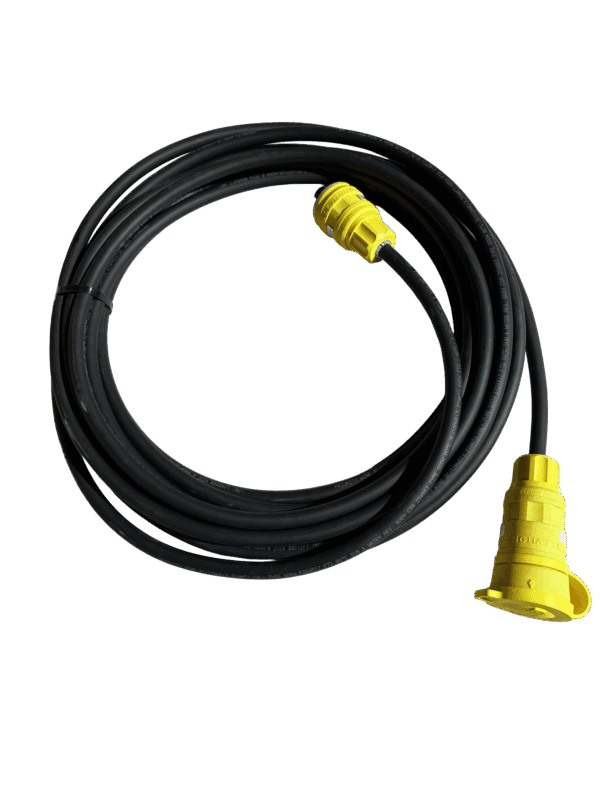





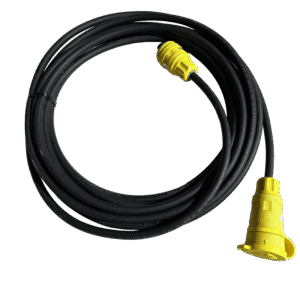
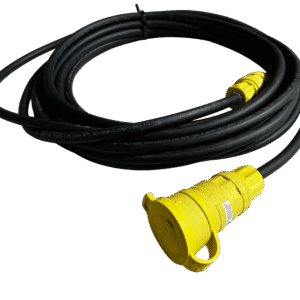
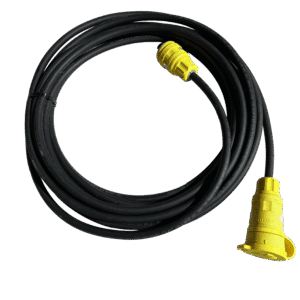
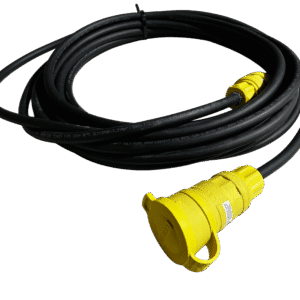


Reviews
There are no reviews yet